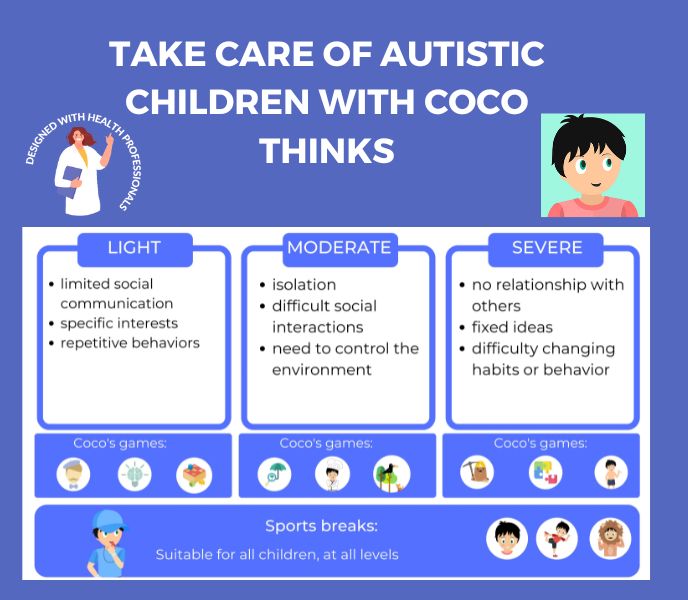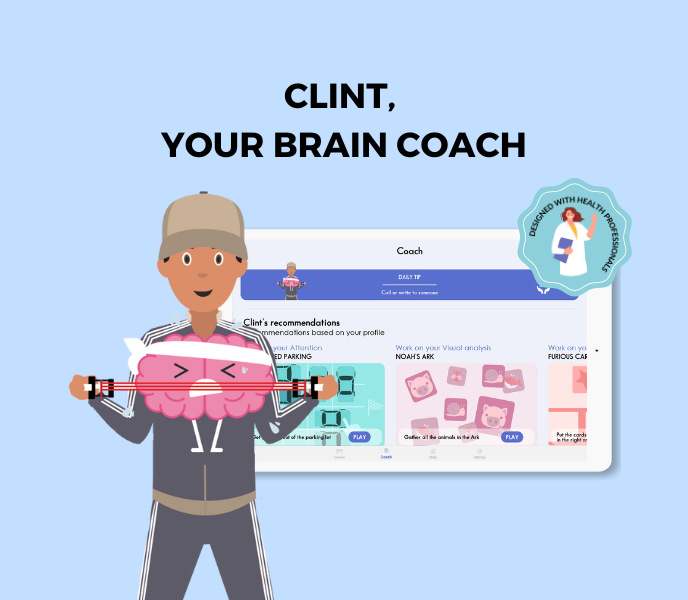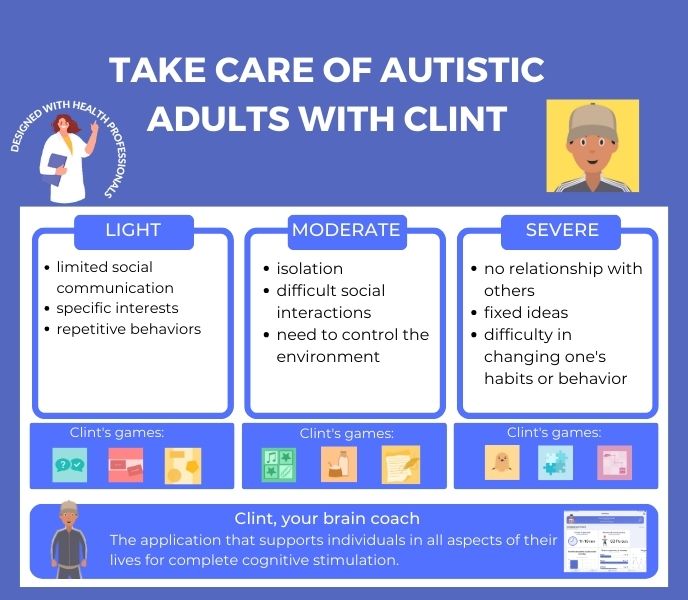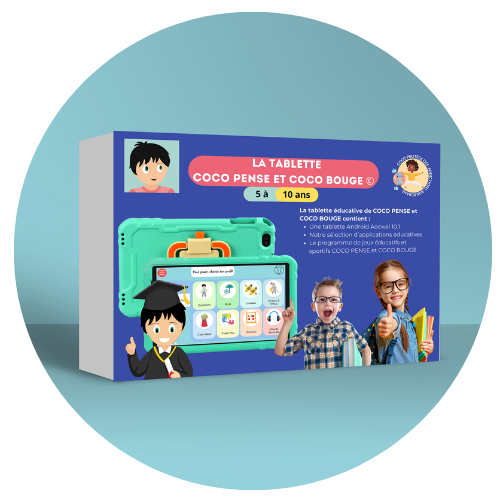Addressing the developmental needs of autistic children is paramount due to the challenges they encounter in social interaction, communication, and sensory processing. By providing a structured yet flexible framework, play therapy enables children with autism spectrum disorder (ASD) to enhance their cognitive abilities, regulate emotions, and improve social interactions. Moreover, it offers a platform for therapists to observe and understand the unique perspectives and preferences of each child, fostering a deeper connection and facilitating meaningful progress in their developmental journey. Thus, integrating play therapy into interventions for autistic children is not just beneficial but essential for their holistic growth and well-being.
Understanding Autism Spectrum Disorder (ASD)
Autism Spectrum Disorder (ASD) encompasses a range of characteristics and challenges that significantly impact individuals’ social and emotional development. From difficulties in communication and social interaction to repetitive behaviors and sensory sensitivities, autism presents a complex array of symptoms that vary widely among individuals. Understanding these challenges is crucial for providing tailored support that addresses the unique needs of individuals with ASD.
In particular, the role of play in supporting their development cannot be overstated. Play serves as a natural platform for autistic individuals to explore, learn, and express themselves in a safe and engaging environment. Through structured play activities, therapists and caregivers can facilitate social skills development, emotional regulation, and sensory integration, fostering meaningful progress and enhancing the overall quality of life for individuals with ASD.
Principles of Play Therapy for Autism
Child-centered approach
In play therapy for autism, employing a child-centered approach is paramount. This principle emphasizes the child’s autonomy, preferences, and pace within the therapeutic process. By following the child’s lead and respecting their choices during play, therapists create a supportive environment where children feel empowered to express themselves freely.
This approach fosters trust and rapport between the child and therapist, paving the way for meaningful therapeutic interactions and promoting the child’s sense of agency and self-efficacy in their developmental journey.
Use of non-directive techniques
Non-directive techniques form the foundation of play therapy for autism, allowing children to explore and process their emotions and experiences at their own pace and in their own way. Unlike directive approaches, which impose specific goals or interventions, non-directive techniques encourage open-ended play and self-expression.
By refraining from imposing judgments or interpretations, therapists create a safe and non-threatening space where children can experiment, problem-solve, and make sense of their world through play. This approach respects the individuality of each child and honors their unique ways of engaging with the therapeutic process, facilitating deeper insights and promoting emotional growth and self-discovery.
Incorporating sensory elements
Incorporating sensory elements into play therapy sessions for autism acknowledges the significance of sensory processing differences in autistic individuals. Sensory elements such as tactile materials, soothing sounds, and movement-based activities provide opportunities for sensory exploration and regulation within the therapeutic context. By integrating sensory experiences into play, therapists help children develop greater awareness of their sensory preferences and sensitivities while fostering adaptive coping strategies for managing sensory challenges.
This approach enhances the child’s ability to regulate arousal levels, promote self-calming, and increase tolerance to sensory stimuli, ultimately supporting their overall well-being and participation in daily activities.
Building Communication and Social Skills
1. Encouraging Interaction with Therapists and Peers:
It involves providing individuals, especially those with autism spectrum disorder (ASD), with opportunities to engage in real-life settings. Interacting with therapists and peers offers a safe and supportive environment for practicing communication skills. Through regular engagement, individuals gradually build comfort and confidence in social exchanges, reducing anxiety associated with social interactions. These interactions serve as valuable practice sessions where individuals can experiment with language and social cues, ultimately enhancing their communication skills and social competence.
2. Practicing Turn-taking and Sharing:
It’s another crucial aspect of building communication and social skills. These activities not only teach important social norms and cooperation skills but also enhance reciprocity and collaboration in social interactions. By mastering turn-taking and sharing, individuals learn the importance of considering others’ perspectives and working cooperatively towards shared goals. This fosters a deeper understanding of social dynamics and encourages individuals to engage more effectively in social exchanges, contributing to their overall social development.
Through structured activities like encouraging interaction with therapists and peers and practicing turn-taking and sharing, individuals with ASD can gradually develop and refine their communication and social skills. These efforts not only enhance their confidence and competence in interpersonal relationships but also empower them with strategies to navigate social challenges more effectively in various real-life situations.
Emotional Regulation and Expression
Emotional regulation and expression are essential aspects of healthy development, particularly for individuals with ASD. Understanding the emotions of an autistic child can be sometimes difficult, read this article to try to know more about it. Creating a safe space for emotional exploration is paramount, enabling individuals to identify and process their feelings without judgment or inhibition. Symbolic play emerges as a powerful tool for expressing complex emotions, allowing individuals to embody and explore various roles and scenarios as a means of communicating their inner experiences. Moreover, teaching coping strategies through play equips individuals with practical tools to manage overwhelming emotions and navigate challenging situations effectively.
By integrating these approaches into therapeutic interventions, individuals with ASD can develop greater self-awareness, resilience, and emotional competence, empowering them to navigate the complexities of their emotions and relationships with greater confidence and adaptability.
Sensory Integration and Sensory Processing
In play therapy sessions for individuals with sensory processing difficulties, incorporating sensory activities is essential to address sensory sensitivities and challenges effectively. By providing a variety of sensory experiences, therapists can help individuals regulate their responses to different stimuli and develop coping mechanisms for sensory overload or discomfort.
These activities may include tactile exploration, proprioceptive input, vestibular stimulation, and auditory experiences tailored to the individual’s needs and preferences. By gradually exposing individuals to sensory stimuli in a controlled and supportive environment, therapists promote self-regulation and enhance sensory integration skills. Through repeated exposure and guided practice, individuals learn to modulate their sensory responses, improving their ability to engage with the environment more comfortably and participate more fully in daily activities and social interactions.
Addressing Behavioral Challenges
Addressing behavioral challenges in children, particularly those with autism spectrum disorder (ASD), involves a comprehensive approach that includes identifying triggers for challenging behaviors, utilizing play to teach alternative behaviors, and reinforcing positive behaviors through play. Therapists and caregivers work collaboratively to identify specific triggers or situations that may lead to challenging behaviors, gaining insight into the underlying causes and potential strategies for intervention.
Through play-based activities, children learn and practice alternative behaviors that are more adaptive and socially acceptable, such as using words to express needs or engaging in calming techniques to manage frustration. Additionally, reinforcing positive behaviors through play helps to strengthen desired behaviors and encourages children to continue practicing them in various contexts, ultimately promoting skill acquisition and positive behavioral outcomes over time.
Family Involvement and Support
Family involvement and support play crucial roles in the holistic development of children, especially those with autism spectrum disorder (ASD). Collaborating with parents to understand the child’s needs is foundational to creating effective intervention plans tailored to the child’s unique strengths and challenges. By fostering open communication and mutual understanding, therapists can empower parents to become active participants in their child’s therapeutic journey. Providing strategies for supporting play at home equips families with practical tools and techniques to facilitate their child’s development in familiar environments.
Moreover, offering ongoing support and guidance to family members helps them navigate the complexities of raising a child with ASD, fostering resilience and strengthening familial bonds. Through collaborative efforts between therapists and families, children with ASD can receive consistent and comprehensive support that nurtures their growth, fosters positive relationships, and enhances their overall well-being.
Tailoring Play Therapy to Individual Needs
Tailoring play therapy to individual needs involves a dynamic process centered on assessing the child’s strengths and interests, adapting therapy techniques accordingly, and continuously monitoring progress to adjust interventions as necessary. Through comprehensive assessment, therapists gain insights into the child’s unique abilities, preferences, and areas of challenge, providing a solid foundation for developing personalized intervention plans. By leveraging the child’s strengths and interests, therapists can design engaging and meaningful play-based activities that resonate with the child, promoting active participation and enhancing therapeutic outcomes. Moreover, flexibility is key in adapting therapy techniques to meet the child’s evolving needs and preferences over time.
Regular monitoring of progress allows therapists to evaluate the effectiveness of interventions, identify areas for growth, and make timely adjustments to optimize therapeutic outcomes. Through this individualized approach, children receive tailored support that honors their unique characteristics, promotes skill development, and fosters holistic well-being.
Integrating Play Therapy into Other Interventions
Integrating play therapy into other interventions involves seamless coordination with therapies like speech or occupational therapy. The incorporation of play-based techniques into educational settings, and ensuring continuity of care across different interventions can help to. Collaboration among therapists ensures a holistic approach to addressing the diverse needs of children, maximizing the effectiveness of interventions, and promoting comprehensive development.
By coordinating strategies and sharing insights, therapists can capitalize on the strengths of each modality. This enhance outcomes and provide tailored support that addresses multiple facets of a child’s development. Incorporating play-based techniques into educational settings fosters active engagement, creativity, and skill development, enriching learning experiences and promoting social and emotional growth. Furthermore, ensuring continuity of care across different interventions facilitates consistency, coherence, and progress monitoring. It helps empowering children to thrive across various environments while receiving the comprehensive support they need to reach their full potential.
Professional Training and Certification in Play Therapy
Becoming a play therapist entails fulfilling specific requirements, including obtaining a master’s degree in counseling or a related field, completing supervised clinical hours, and obtaining licensure or certification. Specialized training in working with autistic children is essential, as it equips therapists with the knowledge and skills necessary to address the unique needs and challenges of this population effectively.
Such training may involve coursework in autism spectrum disorder, play-based interventions, and techniques tailored to support social and emotional development. Moreover, ongoing professional development is paramount in staying abreast of the latest research, best practices, and therapeutic modalities. Continuous learning ensures that play therapists remain competent, informed, and equipped to provide high-quality care that meets the evolving needs of their clients, including children with autism spectrum disorder.
Play therapy plays a pivotal role in the development of children with autism spectrum disorder (ASD) by providing a safe and effective platform for addressing their unique needs. Through structured play activities, autistic children can enhance their social skills, emotional regulation, and sensory integration, fostering holistic development. Emphasizing the holistic approach to supporting autistic children acknowledges the interconnectedness of various domains of development and highlights the importance of addressing each aspect comprehensively.
Looking ahead, future directions in play therapy for autism may involve the integration of emerging technologies, innovative interventions, and increased collaboration among multidisciplinary teams. By continuously evolving and refining approaches to play therapy, therapists can further optimize outcomes and empower autistic children to reach their full potential, fostering greater inclusion, understanding, and well-being in society.
AND FOR FURTHER INFORMATION

COCO, FOR AUTISTIC CHILDREN

CARING FOR AN AUTISTIC CHILD

CLINT, FOR AUTISTIC ADULTS
Other articles that might interest you:
How Parents Can Contribute to Teacher Training
As we delve into the realm of education, it becomes increasingly clear that teacher training is not merely a...
Differentiated Instruction Approaches: Training and Practical Application
Differentiated instruction is a pedagogical approach that recognizes the diverse needs of students in a classroom. It...
Key Skills Teachers Need to Support Students with Special Needs
As we embark on our journey to support children with special needs, it is essential for us to cultivate a deep...









